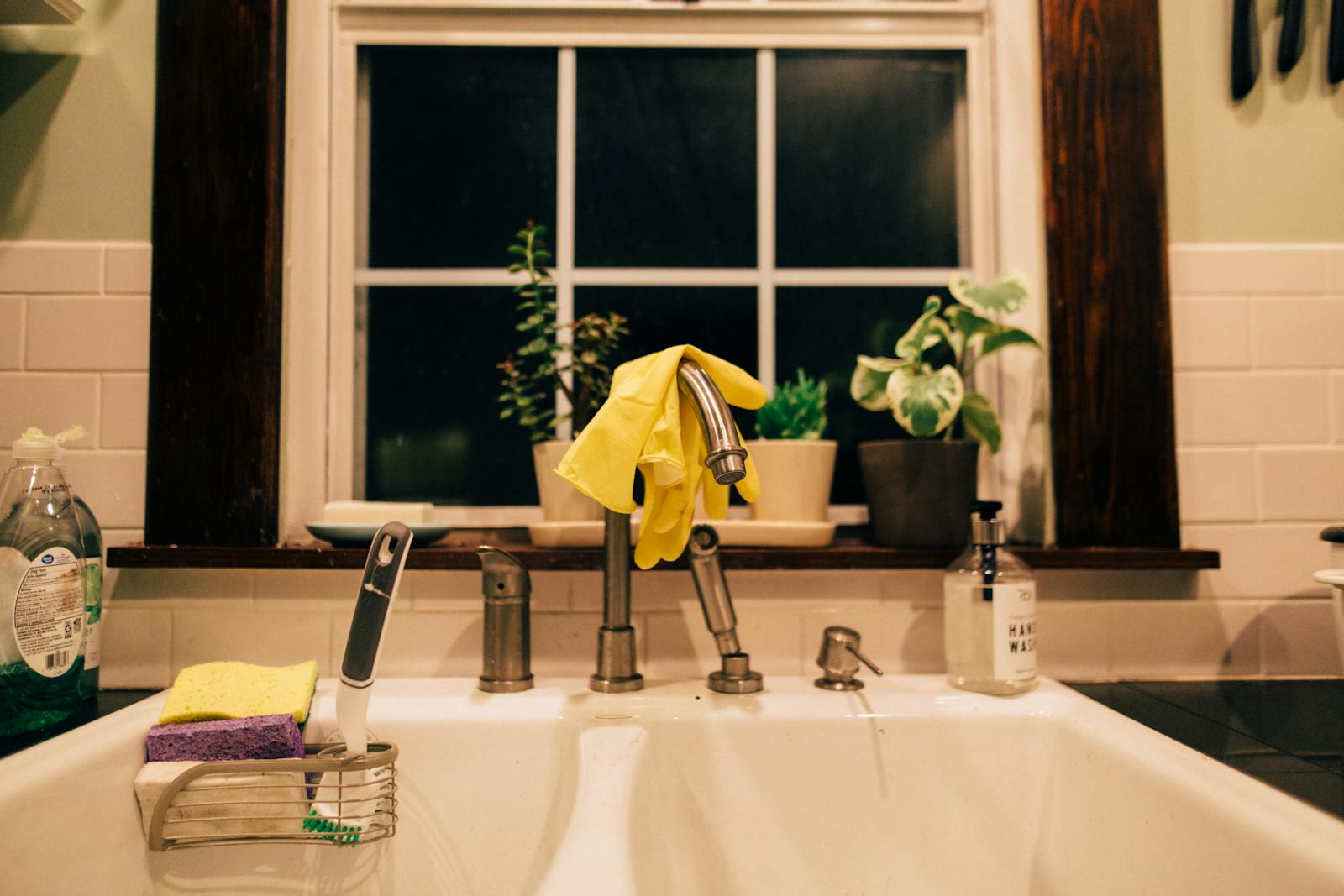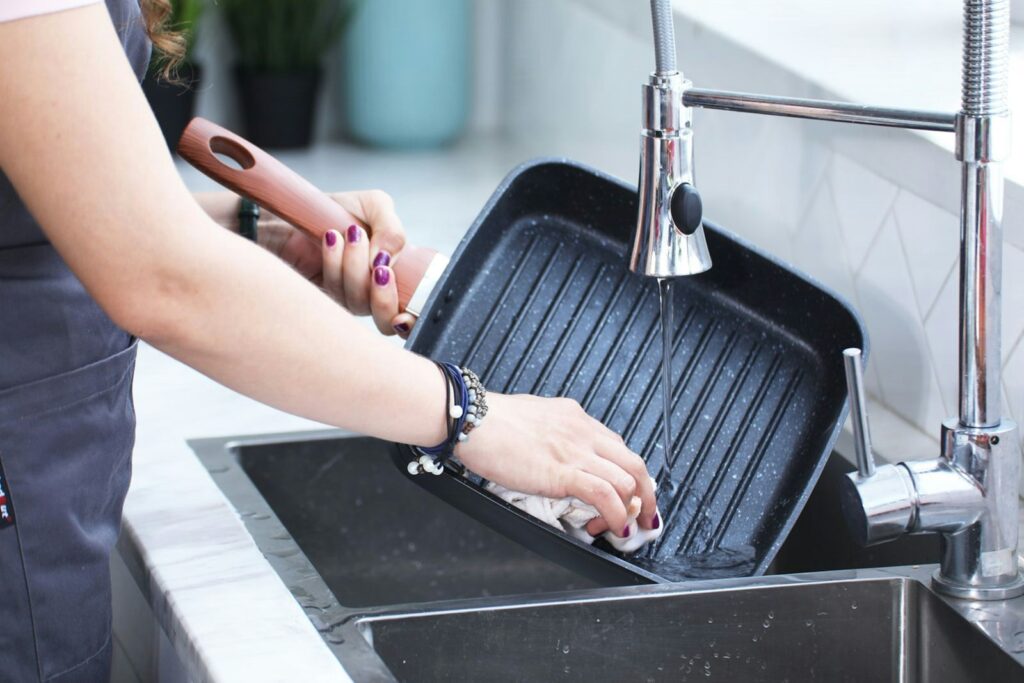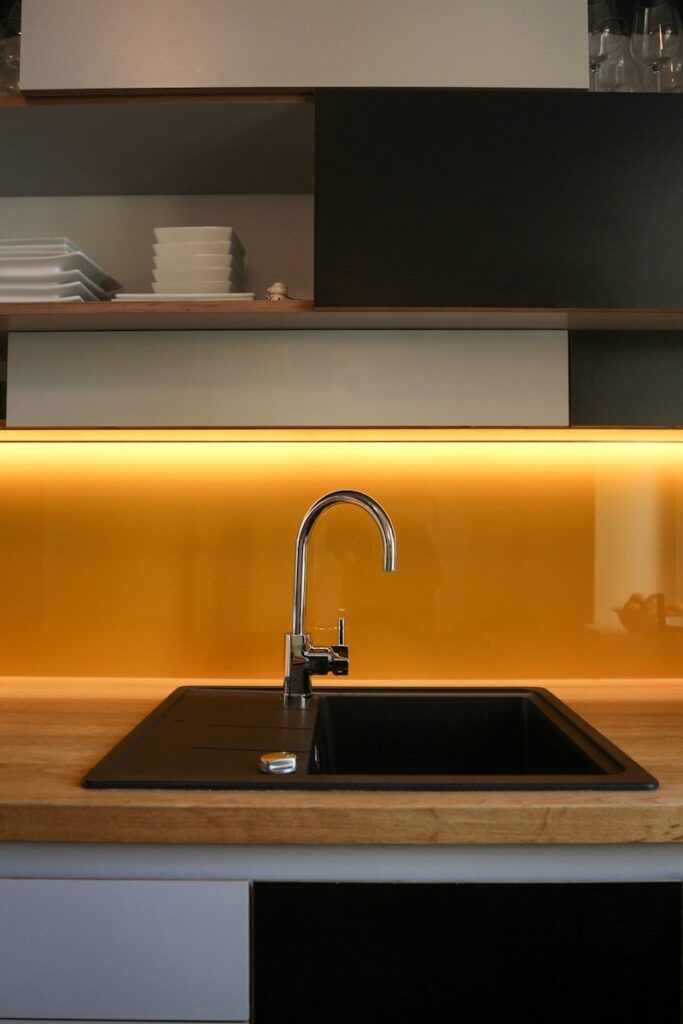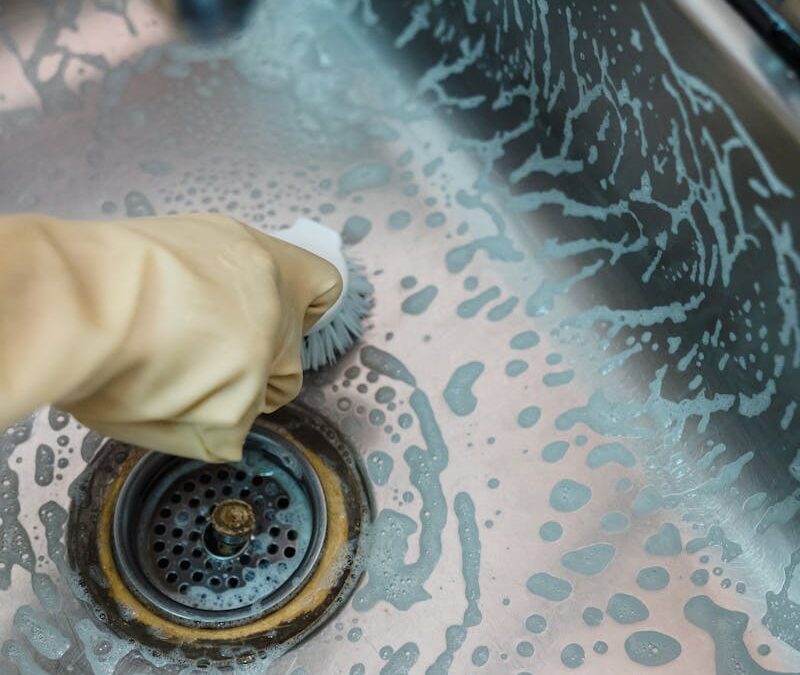A clogged sink drain can bring your cooking and cleaning routines to a grinding halt. Whether you’re a homeowner, apartment renter, or DIY enthusiast, the sight of standing water in your sink or a slow-draining kitchen sink is never fun. The good news? You don’t always need to call a professional plumber to fix it. With a few tools, some household items, and a bit of know-how, you can tackle kitchen sink clogs yourself.
This blog will teach you how to unclog kitchen sink drains, and will have tips for garbage disposals, double kitchen sinks, and more stubborn clogs.
Why It’s Important to Keep Your Kitchen Sink Maintained and Clean
Maintaining a clean and functional kitchen sink is essential for both convenience and health. Here are some key reasons why regular upkeep matters:
Schedule Service Online
Get a free estimate so you know what you're signing up for
"*" indicates required fields
For Emergency Services Call: 410-255-9300
- Prevents Clogs: Regular cleaning helps prevent debris, grease, and food particles from building up and causing clogs. A clear drain keeps your sink functional and reduces the risk of costly plumbing repairs.
- Improves Hygiene: A clean sink is crucial for maintaining a healthy kitchen environment. Leftover food and grime can foster bacteria and unpleasant odors, contaminating your dishes and utensils.
- Extends the Lifespan of Your Pipes: Dirt, grease, and residue accumulation can cause wear and tear on your plumbing over time. Consistent maintenance reduces stress on your pipes and minimizes the risks of leaks or corrosion.
- Saves Money: Taking a proactive approach to cleaning your sink can help avoid expensive fixes like calling a plumber for a major clog. Preventative care is often far cheaper and easier to manage.
- Enhances Your Kitchen’s Appearance: A spotless sink makes your entire kitchen look more inviting and well-kept. It’s a small detail that contributes to the overall cleanliness and aesthetic of the space.
Taking a few simple steps to maintain your kitchen sink regularly can go a long way in ensuring a cleaner, safer, and more efficient kitchen.
Common Causes of Kitchen Sink Clogs
Kitchen sink clogs are a common issue that can disrupt your daily routine and lead to costly repairs if not addressed promptly. Understanding the usual culprits behind these blockages can help prevent them from happening in the first place. Here are some of the most common causes:
- Grease and Oil Buildup: Pouring cooking grease or oil down the sink may seem harmless, but as they cool, they solidify and stick to the walls of your pipes. Over time, this accumulates, creating a stubborn clog that restricts water flow.
- Food Scraps: While garbage disposals can handle small bits of food, large food particles, such as vegetable peels, pasta, rice, or fibrous foods like celery, can cause significant blockages. These items often clump together, leading to clogged drains.
- Soap Scum: Traditional soap can leave behind a residue, especially when combined with hard water. Over time, this soap scum builds up inside the pipes, reducing their diameter and increasing the likelihood of a clog.
- Coffee Grounds: Many people mistakenly think coffee grounds can be rinsed away easily, but they tend to clump together in water, creating dense blockages in your pipes.
- Foreign Objects: Items like utensils, small toys, or even jewelry can accidentally fall into the sink and block the drain. These blockages can be particularly challenging to address.
- Eggshells: Though seemingly harmless, eggshells crushed into small pieces can bind with other debris in your plumbing, forming solid obstructions over time.
To avoid these issues, be mindful of what goes down your drain. Use a sink strainer to catch food scraps and other debris, and properly dispose of grease, oil, and coffee grounds in the trash or compost. Regular maintenance and cautious habits can save you time, money, and unnecessary headaches.
Preliminary Steps to Address a Clogged Kitchen Sink
Before jumping into any unclogging methods, follow these steps to assess the situation and prepare your sink for repair.
- Remove as much standing water as possible: Use a cup or small bucket to bail out the water until the sink is empty.
- Protect yourself: Wear rubber gloves to avoid direct contact with dirty water and debris.
- Inspect the sink trap: Check for visible debris or food particles lodged near the sink stopper or drain opening.
Is the Garbage Disposal to Blame?
If your kitchen sink has a garbage disposal, start by troubleshooting it before trying other methods. A jammed or malfunctioning disposal can cause water to back up.
- Turn off the power: Always switch off the disposal via the power switch and unplug it from the outlet. You don’t want the disposal accidentally starting while working on it.
- Use an Allen wrench: Locate the small hole at the bottom of the disposal unit. Insert an Allen wrench into the hole and rotate it to loosen debris stuck in the blades.
- Flush with water: After you’ve cleared the blockage, flush the sink with hot tap water to see if the clog is resolved.
If the garbage disposal is working fine, it’s time to move on to other unclogging methods.
6 Simple DIY Methods to Unclog Your Kitchen Sink
Here are the most effective DIY methods to unclog your kitchen sink and get it draining properly again.
Use Boiling Water
One of the easiest solutions to handle minor clogs is boiling water. This works best for dissolving grease or soap buildup.
What to Do:
- Boil a kettle of water (approx. 1 cup to 1 liter).
- Carefully pour the boiling water into the drain opening in stages.
- Wait a few minutes to see if the water drains properly.
- Repeat the process if necessary.
Baking Soda and Vinegar Solution
This natural and eco-friendly solution is a powerful way to clear mild to moderate blockages.
What to Do:
- Pour one cup of baking soda into the drain.
- Follow with a cup of white vinegar.
- Allow the mixture to sit for 15–30 minutes to break down debris and grease.
- Flush the drain with boiling water to clear it completely.
Plunge Vigorously
A toilet plunger is a great tool for clearing more stubborn clogs in kitchen sink drains.
What to Do:
- Fill your sink with hot water until it covers the plunger’s rubber base.
- Place the plunger over the drain hole and ensure a good seal.
- Plunge vigorously for 30 seconds.
- Check if the water drains effectively. Repeat if needed.
Pro Tip: For a double sink plug the secondary sink drain with a sink stopper or damp cloth to create more suction.
Try a Drain Snake or Wire Coat Hanger
Drain snakes are designed for clogged drains. But you can also straighten a wire coat hanger as a budget-friendly alternative.
What to Do:
- Clear the area under the sink and place a bucket underneath the drain pipe.
- Insert the drain snake or coat hanger into the drain opening and push it through the clog.
- Twist the snake or wiggle the coat hanger to dislodge any debris.
- Flush the sink with hot water to see if the clog is gone.
Check and Clear the P-Trap
The P-trap (bend in the drain pipe) often collects grease, food particles, and other debris.
What to Do:
- Locate the P-trap under your sink and place a bucket underneath to catch water.
- Loosen the connections holding the P-trap in place (PVC pipes are usually easy to unscrew by hand or with pliers).
- Remove the P-trap and clean out any debris.
- Reattach the P-trap securely and test the drain with hot tap water.
Use Chemical Drain Cleaners (as a Last Resort)
Chemical drain cleaners can dissolve tough blockages but should only be used with care, as they can damage PVC pipes over time and are harmful to the environment.
What to Do:
- Follow the manufacturer’s instructions carefully when using a chemical drain cleaner.
- Pour the solution into the drain and wait for it to work (usually 10–15 minutes).
- Flush the drain with hot water to remove dissolved debris.
Last Resort | Products for Unclogging Your Kitchen Sink
When tackling a stubborn clogged kitchen sink, having the right tools and products can make all the difference. Here are six highly-effective products to help you get the job done:
Drano Max Gel Clog Remover
A powerful solution for dissolving tough clogs caused by grease, soap scum, and hair. Drano Max Gel cuts through standing water to quickly restore flow.
Green Gobbler Drain Clog Dissolver
This eco-friendly product is tough on clogs but gentle on your pipes. It’s an excellent choice for those looking for a biodegradable and non-toxic solution.
FlexiSnake Drain Weasel Sink Snake Cleaner
Perfect for tackling clogs caused by hair and debris, this flexible tool easily reaches deep into pipes to remove blockages with ease.
Liquid-Plumr Pro-Strength Full Clog Destroyer
Equipped with triple-action power, this product is a trusted choice for dissolving tough clogs quickly while protecting your pipes.
OXO Good Grips Drain Cleaning Brush
This multipurpose cleaning tool reaches small areas in your sink and pipes to keep them clean and prevent future clogs.
Drain King Water Pressure Drain Cleaner
A reusable tool that uses water pressure to safely and effectively clear stubborn clogs without harsh chemicals. It’s ideal for eco-conscious homeowners.
With these trusted products, you’ll be better equipped to handle even the most stubborn sink clogs and keep your kitchen flowing smoothly.

When to Call a Professional Plumber Like MD Sewer and Plumbing
If none of the above methods work or you’re dealing with repeated clogs, it’s time to reach out to a professional plumber like MD Sewer and Plumbing. They have the tools and expertise to handle more complicated plumbing issues, such as damaged pipes or deeper clogs.
Tips to Prevent Future Clogs
- Dispose of grease properly: Never pour grease or oil down the sink drain. Instead, store it in a container and throw it in the trash.
- Use a sink strainer: A strainer catches food particles and debris before they enter the drain.
- Flush with hot water weekly: Running hot water through the drain helps prevent buildup inside the pipes.
- Clean your garbage disposal regularly: Grind ice cubes and citrus peels to clean the disposal and keep it smelling fresh.
Enjoy a Free-Flowing Sink | How To Unclog Kitchen Sink Drains
With the right tools and techniques, unclogging your kitchen sink doesn’t have to be a stressful or messy job. From simple DIY methods like using baking soda and vinegar to plunging vigorously, you have a variety of options to get your sink back in working order.
Remember, regular maintenance and mindful disposal habits can keep those clogs at bay!
Got a stubborn clog you can’t handle on your own? Reach out to MD Sewer and Plumbing. We got you! 24/7!






